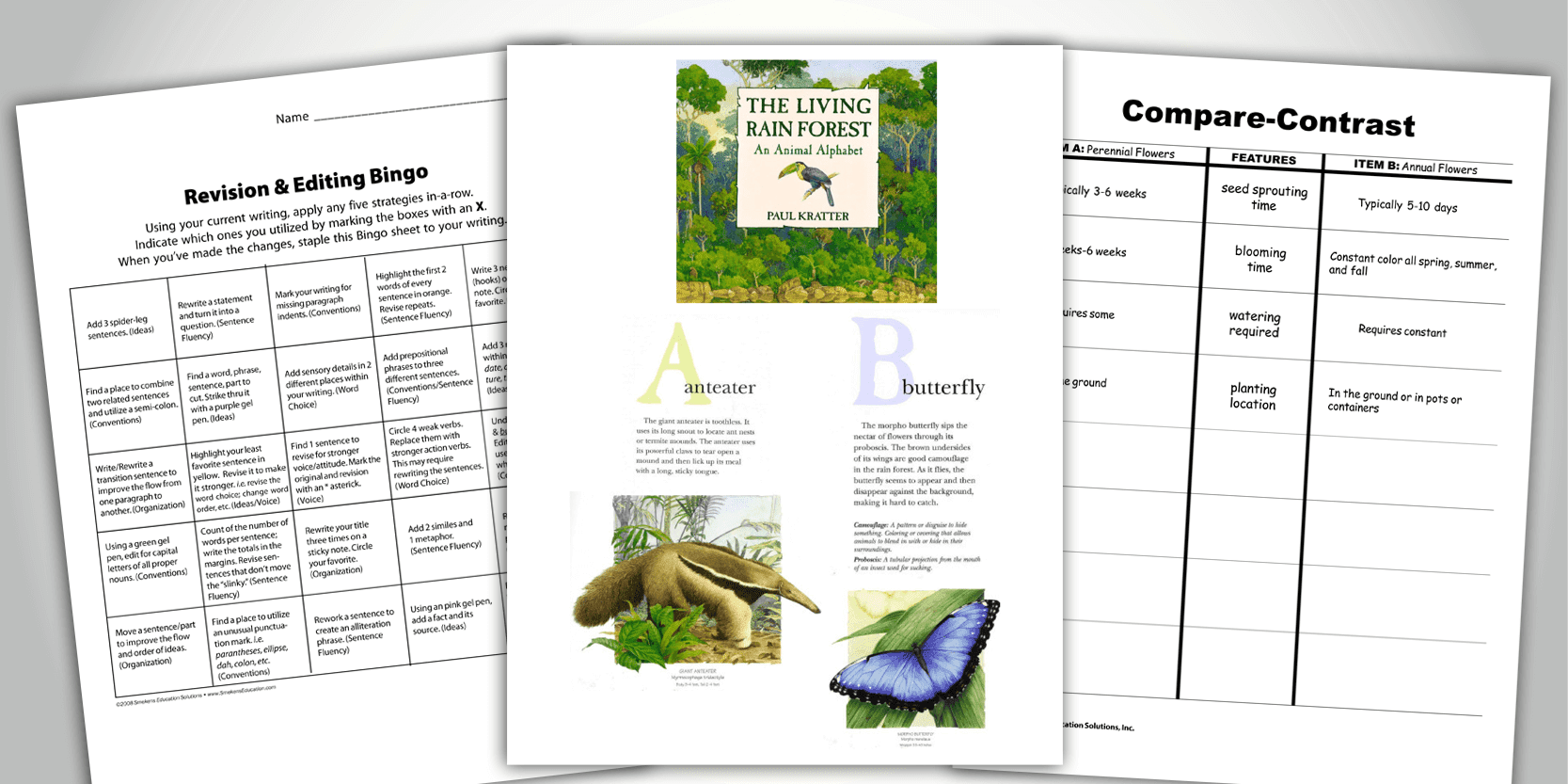Learning Center
Writing
Tweak the Six-Traits rubric for different units
While it’s true that the writer’s purpose and presentation may look very different depending on mode and genre, all good writing possesses the same basic ingredients—the Six Traits. Consequently, the core of any trait-based writing rubric will be applicable to any written text. In fact, this is one of the advantages of the 6-Traits language. Strong writing always includes:

- Developed ideas that are on topic and narrow in their focus.
- An organized introduction, body, and conclusion—beginning, middle, and end.
- Strong word choice and appropriate voice/tone.
- Varied sentence fluency and accurate use of grammar and mechanics (i.e., conventions).
Because the Six Traits is a universal framework, the same rubric can be applied to all three modes of writing (i.e., persuasive/argumentative, informative, and narrative), and various genres within each mode, without having to create a new rubric per mini-unit of study.

Identify differences among modes
Before you can tweak a rubric, you need to create one with your students. Building a kid-friendly rubric based on the Six Traits will provide the foundation you and your students need for writing instruction, feedback, and assessment.
Once your basic 6-Traits rubric is in place, then you can begin revising it to meet more specific criteria. With each new mini-unit of study, include instructional points that you’ll add to the rubric so students know what new expectations are included in the genre they’ll be writing. Using mentor text to introduce a new genre helps to promote a deeper understanding of the genre’s essentials.
Apply changes to the rubric based on the genre skill you’re introducing. You’ll need to tweak your interpretation of the rubric criteria according to the mode.
- If one of the criteria states that “Ideas are well developed with supporting details,” then this would vary in its interpretation.
- In an argumentative, this means that there are clear reasons with specific evidence/examples for each.
- In an informative, this means that there are relevant facts and specifics per main idea.
- In a narrative, this means that there is an identifiable problem with a clear and reasonable solution.
- If the criteria states that “Ideas are organized logically,” then this would vary in its interpretation.
- In an argumentative, this means that reasons are organized to maximize the impact.
- In an informative, this means that similar information is grouped together.
- In a narrative, this means that the plot moves chronologically.
- If the criteria states that “Quotations added interest,” then this would vary in its interpretation.
- In an argumentative, this means that testimonials are interesting and relevant.
- In an informative, this means that expert quotes are interesting and relevant.
- In a narrative, this means that character dialogue is interesting and relevant.
Depending on the criterion, some skills will be similar across modes and genres. But, in some cases, the skill criteria will vary greatly. Include explanations during mini-lesson instruction that feature reasons for this. Share the why behind the criterion to help students better grasp the writer’s purpose for certain skills. Why would a writer want to include that?
As new skills are taught and added to the same growing rubric, those skills can be applied within any writing unit. New genres—new skills—new expectations. It simply requires reviewing the criteria and tweaking its interpretation for each genre. This conversation should occur at the beginning of each new unit. Then, when students craft their end-of-unit pieces, they will know exactly what is expected.




